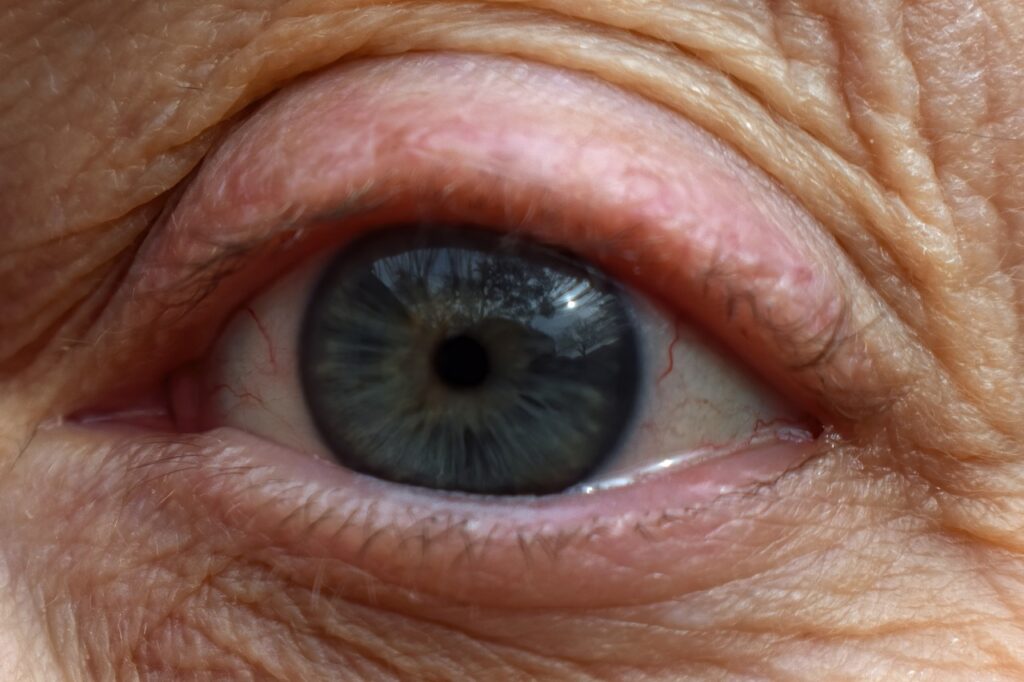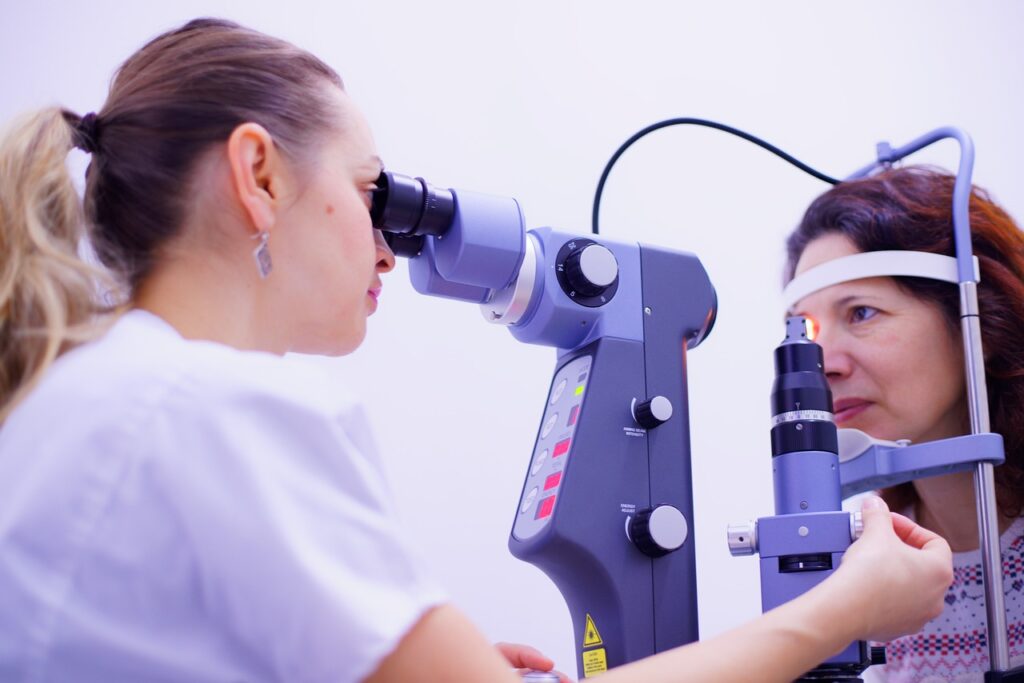Health
The Importance of Home Monitoring for Eye Pressure
Discover the importance of home monitoring for eye pressure! Regularly tracking your eye pressure can help detect early signs of glaucoma and prevent vision loss. Learn why it should be on your radar.
Hey there! Have you ever wondered about the significance of monitoring your eye pressure from the comfort of your own home? Well, let us tell you why it’s important. Keeping an eye on your eye pressure can be essential in detecting early signs of glaucoma, a serious eye condition that can lead to vision loss if left untreated. With home monitoring, you have the power to track your eye pressure regularly, making it easier for you and your eye care professional to identify any changes and take timely action. So, let’s explore the world of home monitoring for eye pressure and discover why it should be on your radar!
What is Eye Pressure
Definition
Eye pressure, also known as intraocular pressure (IOP), refers to the measurement of the fluid pressure inside the eye. This fluid, called aqueous humor, is responsible for maintaining the shape and health of the eyeball. Eye pressure is crucial for normal vision, but an imbalance in the production and drainage of this fluid can lead to various eye conditions, including glaucoma.
Normal Range
The normal range of eye pressure typically falls between 12 and 22 millimeters of mercury (mmHg). However, it is important to note that everyone’s eye pressure can vary, and what may be considered normal for one person may be high for another. Regular monitoring of your eye pressure is essential to determine your baseline measurement and detect any fluctuations that may require further attention.
Factors that Affect Eye Pressure
Several factors can influence eye pressure, including age, genetics, underlying health conditions, and certain medications. Additionally, activities such as intense physical exertion, alcohol consumption, and caffeine intake can temporarily elevate eye pressure. It is crucial to be aware of these factors and monitor your eye pressure regularly to ensure optimal eye health and prevent potential vision problems.
1. Understanding Glaucoma
Definition and Types
Glaucoma is a group of eye diseases characterized by damage to the optic nerve, often caused by increased eye pressure. There are several types of glaucoma, including open-angle glaucoma, closed-angle glaucoma, and normal-tension glaucoma. Each type has its own unique characteristics and risk factors, but they all share the common link of elevated eye pressure contributing to optic nerve damage.
Relation of Eye Pressure to Glaucoma
While elevated eye pressure is a significant risk factor for glaucoma, it is important to note that not everyone with high eye pressure will develop the disease. On the other hand, some individuals with normal eye pressure can still develop glaucoma. This suggests that other factors, such as the health of the optic nerve and blood flow to the eye, also play a role in the development of glaucoma. Nonetheless, monitoring eye pressure is crucial as it remains a vital indicator for assessing one’s risk of developing glaucoma.
Importance of Early Detection
Early detection of glaucoma is crucial for preserving vision and preventing further damage to the optic nerve. Since glaucoma often progresses silently without noticeable symptoms in its early stages, regular monitoring of eye pressure is key to detecting any changes or abnormalities that may indicate the presence of glaucoma. Identifying and treating glaucoma early can significantly improve the chances of preserving optimal vision and mitigating the long-term impact of the disease.
2. The Need for Home Monitoring
Challenges of Traditional Clinic Monitoring
Traditional clinic monitoring of eye pressure involves scheduled visits to an ophthalmologist or optometrist to have your eyes checked using specialized equipment. However, this method poses a few challenges. Firstly, it can be time-consuming and inconvenient to schedule regular appointments, especially for individuals with busy lifestyles. Secondly, the stress of a clinical environment itself can lead to temporary spikes in eye pressure, potentially affecting the accuracy of the readings. Lastly, relying solely on occasional clinic visits may not provide a comprehensive understanding of how eye pressure fluctuates throughout the day and in different situations.
Advantages of Home Monitoring
Home monitoring of eye pressure offers several advantages over traditional clinic monitoring. By having a portable monitoring device at home, you have the flexibility to measure your eye pressure at any time that suits you, without the need for appointments or travel. This allows for more frequent monitoring, enabling a better understanding of your eye pressure patterns and any potential fluctuations. Additionally, home monitoring provides a more relaxed and comfortable environment, reducing stress-related changes in eye pressure and ensuring more accurate measurements.
Effectiveness of Home Monitoring in Detecting Changes in Eye Pressure
Numerous studies have demonstrated the effectiveness of home monitoring in detecting changes in eye pressure. Research has shown that home monitoring is comparable to, and sometimes even more sensitive than, traditional clinic monitoring in detecting diurnal fluctuations in eye pressure. This is particularly important as glaucoma is often characterized by elevated eye pressure during certain times of the day. Regular home monitoring allows for a more accurate assessment of your eye pressure profile and aids in the timely detection of any significant changes that may indicate potential eye health issues.
3. The Role of Technology in Home Monitoring
Overview of Available Home Monitoring Devices
Technology has revolutionized home monitoring of eye pressure by introducing various devices that are user-friendly, portable, and accurate. These devices typically utilize tonometry, a measurement technique for assessing eye pressure. Some popular home monitoring devices include handheld tonometers, contact lens-based sensors, and smartphone-compatible devices. Each device has its own unique features and measurement methods, catering to different preferences and needs.
Features to Consider When Choosing a Device
When selecting a home monitoring device, it is important to consider certain features that enhance usability and accuracy. Look for a device with clear instructions and user-friendly interface to ensure ease of use. Accuracy is of utmost importance, so opt for a device that has been clinically validated and approved by relevant regulatory bodies. Additionally, consider the device’s size, portability, and connectivity options to determine its suitability for your lifestyle and personal preferences.
Accuracy and Reliability of Home Monitoring Technology
Home monitoring devices have undergone rigorous testing to ensure their accuracy and reliability. While no device is completely free from measurement error, advancements in technology have significantly improved the precision of home monitoring devices. Scientific studies have shown that many of these devices provide measurements that are comparable to those obtained during clinic visits, making them reliable tools for monitoring eye pressure at home. It is essential to follow the manufacturer’s instructions carefully to obtain the most accurate measurements and to consult with your eye care professional for interpretation and guidance.

4. Benefits of Regular Monitoring
Early Detection of Eye Pressure Fluctuations
Regular monitoring of eye pressure allows for the early detection of any fluctuations or abnormal patterns. By establishing a baseline measurement, you can track any deviations from your normal eye pressure and promptly bring them to the attention of your eye care professional. Detecting changes at their early stages increases the likelihood of successful intervention and prevents potential complications associated with untreated eye pressure fluctuations.
Prevention of Vision Loss
Monitoring eye pressure at home empowers you with timely information about your eye health, enabling you to take proactive measures to prevent vision loss. By detecting any significant changes in eye pressure, you can alert your eye care professional and discuss appropriate treatment options. Prompt intervention can help manage eye pressure and prevent or minimize the risk of optic nerve damage, preserving your vision for years to come.
Better Management of Glaucoma through Personalized Treatment Plans
Regular home monitoring of eye pressure plays a crucial role in the management of glaucoma. By establishing a comprehensive profile of your eye pressure patterns, your eye care professional can personalize your treatment plan based on your specific needs and response to therapy. This personalized approach allows for targeted interventions, such as adjusting medication dosage or exploring alternative treatment options, to optimize the management of glaucoma and ensure the best possible visual outcomes.
5. How to Monitor Eye Pressure at Home
Step-by-Step Guide to Using a Home Monitoring Device
Monitoring your eye pressure at home involves a straightforward process with the help of a home monitoring device. Firstly, ensure that the device is properly calibrated as per the manufacturer’s instructions. Then, clean your hands and the device to maintain hygiene. Follow the instructions provided by the device manufacturer to position the device correctly on your eye, apply any necessary drops, and take the measurement. Repeat the process for both eyes, if needed. Carefully record the measurements for future reference and analysis.
Tips for Accurate Measurements
To ensure accurate measurements during home monitoring, consider the following tips:
- Follow the manufacturer’s instructions carefully.
- Minimize distractions and ensure a quiet, well-lit environment.
- Avoid rubbing your eyes before measurements, as this can temporarily affect eye pressure.
- Hold the device steady and maintain consistent pressure on the eye without excessive force.
- If using eye drops, administer them as directed by your eye care professional.
Frequency of Monitoring
The frequency of monitoring eye pressure at home will depend on your specific circumstances and the recommendations of your eye care professional. Generally, it is advisable to monitor your eye pressure regularly, especially if you have a diagnosis of glaucoma or other conditions that require close monitoring. Your eye care professional will guide you on the appropriate schedule for monitoring, taking into account any treatment changes or other factors that may impact your eye health.

6. Tracking and Recording Results
Importance of Maintaining a Record
Maintaining a record of your eye pressure measurements is vital for tracking changes over time and identifying any long-term trends. By recording your measurements, you can observe patterns, detect fluctuations, and have a comprehensive overview of your eye pressure profile. This record becomes a valuable resource for both you and your eye care professional in assessing the efficacy of treatment plans, evaluating the impact of lifestyle changes, and making informed decisions regarding your eye health.
Using Tracking Apps and Software
To streamline the process of recording and analyzing your eye pressure measurements, there are various tracking apps and software available. These digital tools allow you to input your measurements, track trends, and generate visual reports that can be easily shared with your eye care professional. Additionally, some apps offer medication reminders, appointment scheduling, and educational resources tailored to your specific eye health needs. Exploring these digital solutions can enhance your home monitoring experience and facilitate effective communication with your eye care team.
Sharing Results with Your Eye Doctor
Regular communication and data sharing with your eye care professional are essential for effective management of your eye health. Sharing your home monitoring results enables your eye doctor to have a complete picture of your eye pressure profile and make informed decisions regarding your treatment plan. Be sure to provide your eye care professional with accurate and up-to-date records, highlighting any significant changes or concerns you may have. This collaboration ensures that you receive the most appropriate care and ongoing support in preserving your vision.
7. Integrating Home Monitoring into Your Eye Care Routine
Collaboration with Your Ophthalmologist
Home monitoring should not replace regular visits to your ophthalmologist or optometrist but rather complement them. Collaborating with your eye care professional is essential to ensure comprehensive eye health management. By sharing your home monitoring results during your clinic visits, your eye care professional can assess the accuracy of your measurements, provide professional confirmation, and make any necessary adjustments to your treatment plan.
Incorporating Home Monitoring into Treatment Plans
Home monitoring plays an integral role in the overall treatment plan for managing eye pressure. Your eye care professional will determine the appropriate interval for home monitoring based on your specific needs, considering factors such as the severity of your condition, the effectiveness of your current treatment, and any other relevant medical considerations. By incorporating regular home monitoring into your treatment plan, you actively participate in your eye health management and contribute to the ongoing success of your treatment.
Regular Check-ups and Evaluation
While home monitoring provides valuable insights into your eye pressure, it is crucial to continue with regular check-ups and evaluations with your eye care professional. By complementing home monitoring with clinical assessments, your eye care professional can perform comprehensive eye examinations, assess the overall health of your eyes, evaluate the progression of any eye conditions, and make informed treatment decisions. Regular check-ups ensure that any changes in your eye health are promptly addressed, providing you with a holistic and proactive approach to maintaining optimal vision.
8. Potential Challenges and Limitations
User Error and Misinterpretation of Results
Home monitoring of eye pressure may be subject to user error or misinterpretation of results, particularly when not following the instructions accurately. Factors such as improper device usage, failure to maintain hygiene, and lack of training can lead to inaccurate measurements or misjudgment of eye pressure levels. To minimize these challenges, it is essential to familiarize yourself with the device’s instructions, seek guidance from your eye care professional, and stay vigilant in adhering to proper measurement techniques.
Device Limitations and Calibration
Different home monitoring devices may have their limitations and dependencies on calibration. While these devices are designed to provide accurate measurements, factors such as device calibration, battery life, and software updates can impact the reliability of the readings. Regularly checking and calibrating your device as per the manufacturer’s instructions is crucial to ensure consistent and accurate measurements. Consult with your eye care professional to address any concerns regarding device limitations and to confirm the validity of your measurements.
Importance of Professional Confirmation
Although home monitoring devices offer convenience and accessibility, it is important to remember that professional confirmation is essential. Discussing your home monitoring results with your eye care professional allows them to assess the accuracy of your measurements and interpret the findings in the context of your overall eye health. Professional confirmation provides reassurance, guidance, and the opportunity to address any questions or concerns you may have regarding your eye pressure measurements.
10. The Future of Home Monitoring for Eye Pressure
Advancements in Technology
As technology continues to advance, the future of home monitoring for eye pressure looks promising. Researchers and innovators are constantly working on improving the accuracy, usability, and portability of home monitoring devices. Advancements such as non-contact tonometry and wearable sensors hold the potential to further enhance the home monitoring experience, making it more convenient and user-friendly. Additionally, integration with artificial intelligence (AI) and machine learning may enable more accurate interpretation of measurements and early detection of eye health abnormalities.
Integration with Telemedicine
The growing popularity of telemedicine opens up new possibilities for home monitoring of eye pressure. Integrating home monitoring devices with telemedicine platforms allows for real-time transmission of measurements to your eye care professional, enabling remote consultations and guidance. This integration provides greater convenience and accessibility to individuals who may have limited access to traditional clinic monitoring or who prefer the convenience of monitoring from their own homes.
Potential Impact on Eye Care Accessibility
The widespread adoption of home monitoring for eye pressure has the potential to significantly improve eye care accessibility. By empowering individuals to monitor their eye pressure outside of clinical settings, barriers such as distance, time constraints, and financial limitations can be overcome. This increased accessibility not only ensures timely detection and intervention in high-risk individuals but also promotes proactive eye health management in the general population. With greater emphasis on home monitoring, eye care becomes more patient-centric and inclusive, potentially reducing the overall burden of eye diseases and related complications.
In conclusion, home monitoring of eye pressure plays a crucial role in the early detection, prevention, and management of eye conditions such as glaucoma. By utilizing technology and adhering to best practices in measurement techniques, individuals can actively participate in their eye health management. Collaboration with eye care professionals, regular check-ups, and incorporating home monitoring into treatment plans ensure a holistic approach to eye care. As technology continues to evolve, the future of home monitoring holds great promise in improving eye care accessibility and advancing the field of ophthalmology. With early detection, personalized treatment plans, and proactive monitoring, preserving your vision becomes a shared goal between you and your eye care team.




